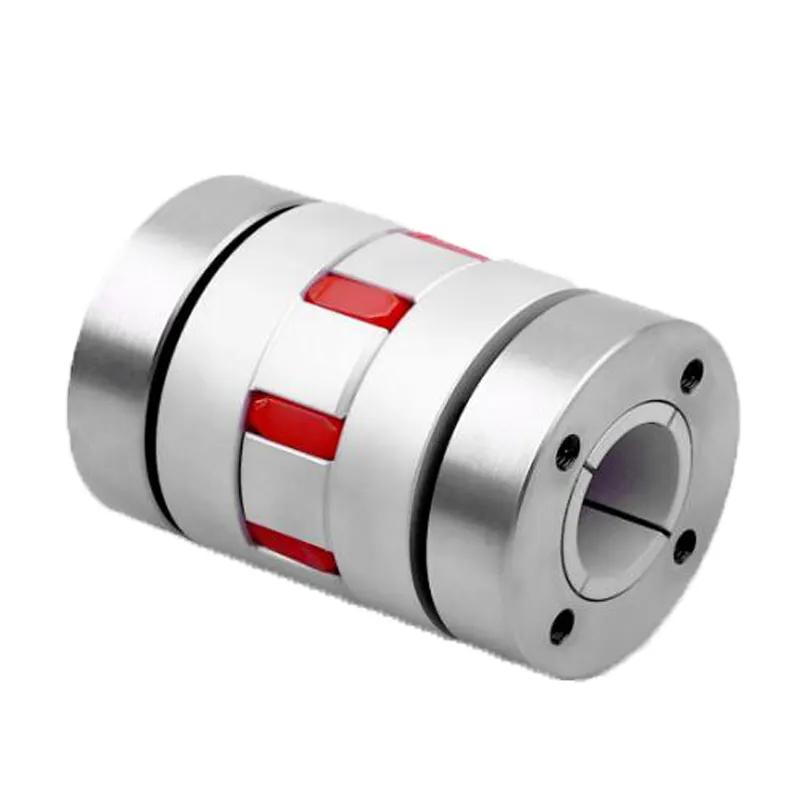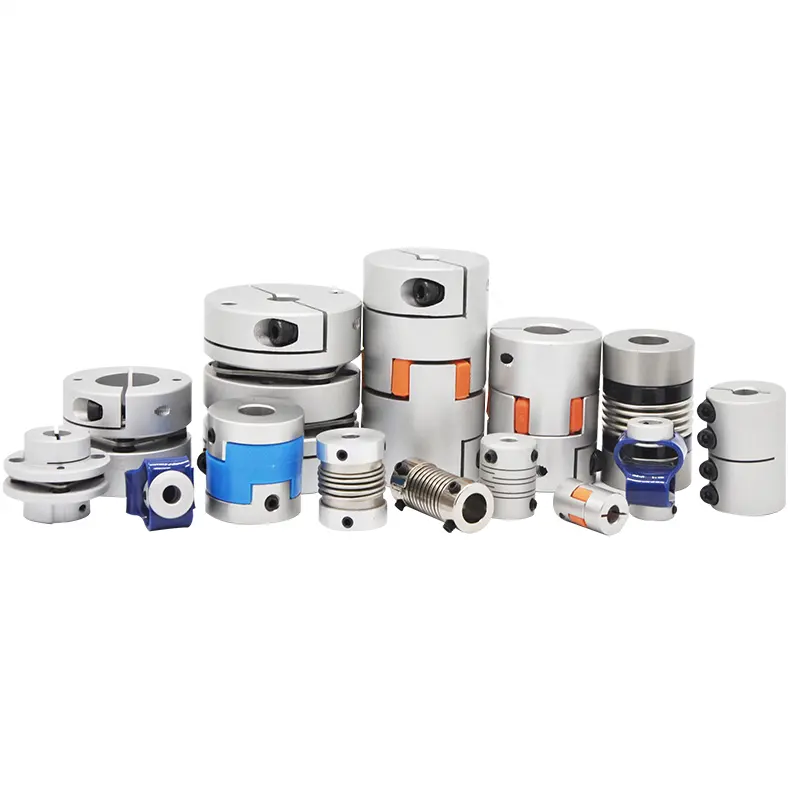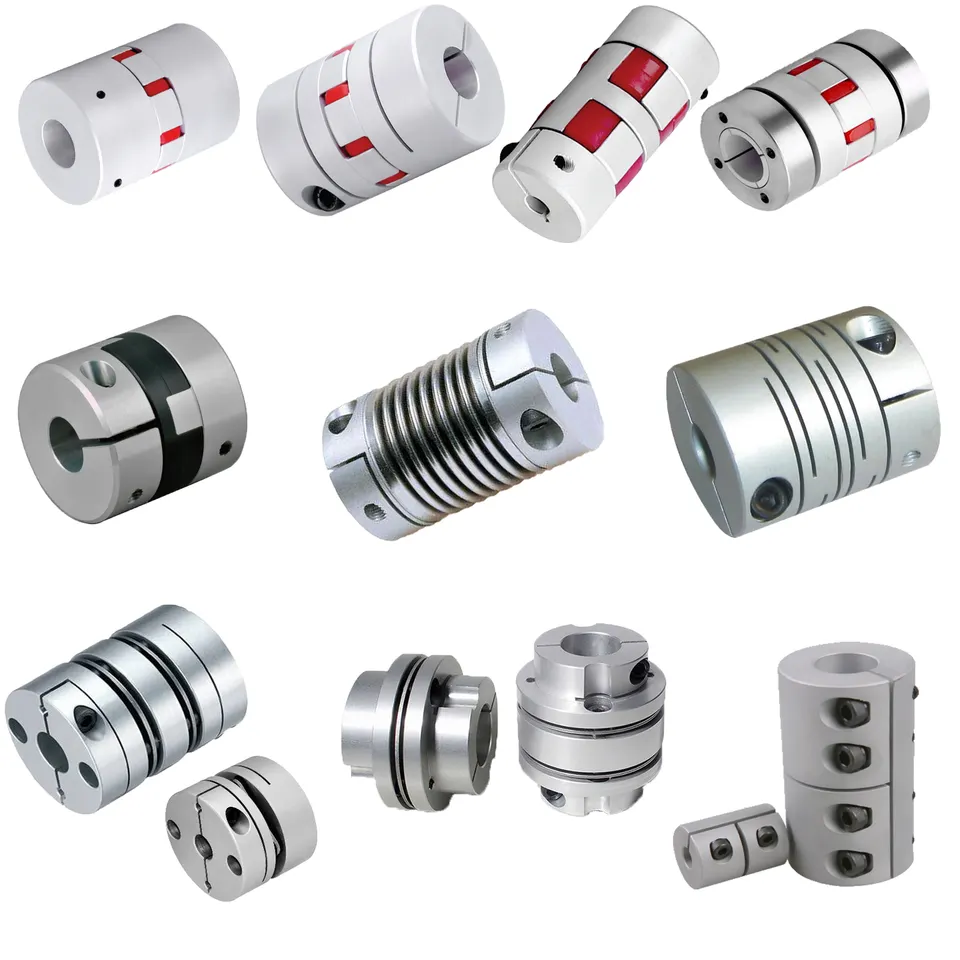Product Description
XL Star Type Rubber Flexible Jaw Coupling Flexible Plum Coupling
Description
The plum CHINAMFG coupling is closely combined with the main body of the 2 half coupling with polyurethane plastic as the elastic element, and the main body is mainly made of imported alloy aluminum. It is applicable to servo system, spindle drive, lifting platform, machine tool drive and gearbox motor. Compact, no backlash, 3 different hardness elastomers are provided, which can absorb vibration and compensate radial and angular deviation. It is mainly suitable for working places with frequent starting, CHINAMFG and reverse rotation, medium high speed, medium torque and high reliability.
Paramenters
| Type | Torque Tn (N.m) | Max Speed [n] (r/min) | Shaft hole DIA di dz | Hole Length L | D | D: | Dz | E | S |
| XL1 | 34 | 19000 | 6-19-24 | 25 | 40 | 32 | 40 | 16 | 2 |
| XL2 | 120 | 14000 | 8-24-28 | 30 | 55 | 40 | 55 | 18 | 2 |
| XL3 | 320 | 11800 | 10-28-38 | 35 | 65 | 48 | 65 | 20 | 2.5 |
| XL4 | 650 | 9500 | 12-38-45 | 45 | 80 | 66 | 78 | 24 | 3 |
| XL5 | 900 | 8000 | 14-42-55 | 50 | 98 | 75 | 94 | 26 | 3 |
| XL6 | 1050 | 7100 | 1548-60 | 56 | 105 | 85 | 104 | 28 | 3.5 |
| XL7 | 1250 | 6300 | 20-55-70 | 65 | 120 | 98 | 118 | 30 | 4 |
| XL8 | 1280 | 5600 | 22~65-75 | 75 | 135 | 115 | 134 | 35 | 4.5 |
| XL9 | 2930 | 4750 | 30-75-90 | 85 | 160 | 135 | 158 | 40 | 5 |
| XL10 | 7200 | 3750 | 40-90-100 | 100 | 200 | 160 | 180 | 45 | 5.5 |
| XL11 | 9900 | 3350 | 50-100-110 | 110 | 225 | 180 | 200 | 50 | 6 |
| XL12 | 12000 | 3000 | 60-110-125 | 120 | 255 | 200 | 230 | 55 | 6.5 |
| XL13 | 15000 | 2650 | 60-125-145 | 140 | 290 | 230 | 265 | 60 | 7 |
| XL14 | 22000 | 2360 | 60-140-165 | 155 | 320 | 255 | 300 | 65 | 7.5 |
| XL15 | 30000 | 2000 | 80-160-190 | 175 | 370 | 290 | 345 | 75 | 9 |
| XL16 | 35000 | 1800 | 85-180-220 | 195 | 420 | 325 | 400 | 85 | 10.5 |
Features
1. Elastic plum-shaped flexible coupling.
2. During transmission, it can realize zero backlash torque transmission torque under low torque state.
3. The elastic spacer is made of polyurethane, and the torque exceeds the traditional claw coupling by more than 2 times.
4. Plum CHINAMFG elastomer can resist oil and electrical insulation, operating temperature: -20ºC~80ºC.
5. Excellent elastic effect to absorb vibration, eccentricity and deflection.
6. If there are multiple deviations, the allowable value of a single deviation will be reduced.

How do jaw couplings handle shaft misalignment in rotating equipment?
Jaw couplings are mechanical devices used in rotating equipment to connect two shafts and transmit torque. One of the key advantages of jaw couplings is their ability to handle shaft misalignment. Shaft misalignment can occur due to various reasons, including manufacturing tolerances, thermal expansion, foundation settling, or general wear and tear. Jaw couplings can accommodate misalignment in three primary ways:
- Angular Misalignment: Jaw couplings can handle small angular misalignments between the connected shafts. The flexible nature of the elastomer spider (the central element in the jaw coupling) allows for a certain degree of angular movement between the hubs without exerting excessive forces on the connected equipment.
- Parallel Misalignment: Parallel misalignment occurs when the two shafts are not perfectly aligned in a straight line. Jaw couplings can tolerate some amount of parallel misalignment due to the flexibility of the elastomer spider. This flexibility allows the hubs to move slightly relative to each other, thereby reducing the transmission of misalignment-induced forces to the equipment.
- Axial Misalignment: Axial misalignment refers to the offset between the axial positions of the connected shafts. While jaw couplings are primarily designed for torque transmission and misalignment compensation in angular and parallel directions, they can also handle minor amounts of axial misalignment due to the elastomer spider's ability to absorb limited axial movement.
It is essential to note that jaw couplings have their limits in handling misalignment. Excessive misalignment beyond their design capabilities can lead to premature wear, reduced coupling life, and potential damage to the connected equipment. Therefore, it is crucial to understand the specific misalignment limits of the jaw coupling being used and ensure that the equipment operates within those limits.
In summary, jaw couplings handle shaft misalignment in rotating equipment by utilizing the flexibility of the elastomer spider to accommodate small angular, parallel, and axial misalignments. This feature helps protect the connected equipment from the detrimental effects of misalignment and ensures smooth and reliable operation.

What are the common installation mistakes to avoid when using jaw couplings?
Proper installation of jaw couplings is crucial to ensure their reliable and efficient operation. Avoiding common installation mistakes can prevent premature wear, misalignment, and potential equipment damage. Here are some of the most common installation mistakes to avoid when using jaw couplings:
- Incorrect Coupling Size: Using the wrong size of jaw coupling for the application can lead to various issues. Undersized couplings may not handle the required torque, leading to early failure, while oversized couplings may result in increased rotational inertia and decreased system performance. Always ensure that the selected coupling is appropriate for the torque and power requirements of the equipment.
- Misalignment: Improper alignment of the shafts during coupling installation can cause excessive forces and premature wear on the coupling components. Angular, parallel, and axial misalignments should be minimized and kept within the manufacturer's recommended tolerances. Consider using alignment tools and techniques to achieve accurate shaft alignment.
- Over-Tightening: Applying excessive torque when tightening the coupling elements can lead to deformation of the elastomer spider or damage to the hubs. Over-tightening can also increase friction and cause premature wear. Follow the manufacturer's specified torque values during installation to ensure proper clamping without causing damage.
- Lack of Lubrication: Some jaw couplings require lubrication to reduce friction and wear. Neglecting to lubricate the coupling elements can lead to increased friction, higher operating temperatures, and reduced coupling life. Follow the manufacturer's guidelines regarding lubrication intervals and types of lubricants to use.
- Failure to Inspect Components: Before installation, carefully inspect all coupling components for any signs of damage, wear, or defects. Using a damaged or worn-out elastomer spider or other components can compromise the coupling's performance and reliability. Replace any worn or damaged parts before installing the coupling.
- Improper Shaft End Preparation: Ensure that the shaft ends are clean, smooth, and free from burrs or imperfections before installing the coupling. Rough or uneven shaft surfaces can lead to misalignment and reduce coupling performance. Properly clean and prepare the shaft ends to ensure a secure and accurate fit.
- Not Following Manufacturer's Guidelines: Each jaw coupling has specific installation instructions provided by the manufacturer. Failure to follow these guidelines can result in coupling failure or reduced performance. Always refer to the manufacturer's installation manual and recommendations for proper installation procedures.
By avoiding these common installation mistakes, users can maximize the performance and longevity of jaw couplings in their applications. Proper installation ensures that the coupling operates efficiently, transmits power effectively, and reduces the risk of unexpected failures or downtime.

Comparing Jaw Couplings to Other Types of Couplings in Performance
Jaw couplings offer certain advantages and disadvantages compared to other types of couplings, and their performance characteristics vary based on the specific application requirements. Here's a comparison of jaw couplings with some commonly used coupling types:
- Jaw Couplings vs. Gear Couplings: Jaw couplings are more economical and easier to install than gear couplings. They can handle misalignment to some extent, but gear couplings are better suited for high torque and high misalignment applications.
- Jaw Couplings vs. Disc Couplings: Both jaw couplings and disc couplings provide some level of misalignment compensation, but disc couplings offer higher torque capacity and better torsional stiffness. Jaw couplings are generally more cost-effective for low to moderate torque applications.
- Jaw Couplings vs. Oldham Couplings: Jaw couplings are torsionally stiffer than Oldham couplings, which means they provide more accurate torque transmission. However, Oldham couplings can accommodate higher misalignment and have no moving parts, making them suitable for some low-speed applications.
- Jaw Couplings vs. Flexible Beam Couplings: Beam couplings are more flexible than jaw couplings and can handle higher misalignment. However, jaw couplings have a higher torque capacity and can dampen vibration better in certain conditions.
Ultimately, the choice of coupling depends on the specific needs of the application, including factors like torque requirements, misalignment, speed, and cost considerations. It's essential to carefully evaluate the performance characteristics of different coupling types and select the one that best suits the demands of the mechanical system to ensure reliable and efficient power transmission.


editor by CX 2023-10-01
